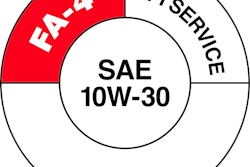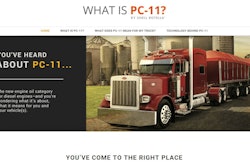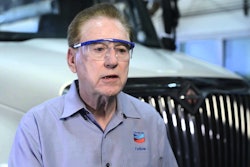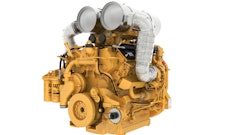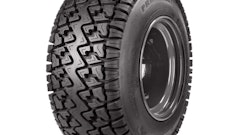
The formation of a new oil category (PC-11) is not something to be taken lightly. “For each of the additive suppliers or oil companies to finalize all of their formulations, the total cost of this type of project is extremely expensive,” says Jim McGeehan, global manager of diesel engine technology, Chevron Lubricants. “It does not come cheap, but in the end, it pays for itself in that lubricants are not causing engines to fail.”
In the past couple of decades, diesel engine emissions regulations necessitated changes to heavy-duty diesel engine oils. “Each time there has been a change, with the exception of 2010, there has also been a change in the type of lubricant necessary to lubricate those engines,” says Dan Arcy, Global OEM technical manager for Shell and a member of the American Petroleum Institute (API) committee to develop the PC-11 oil category.
Last year, the National Highway Traffic Safety Administration issued a regulation that limits greenhouse gases and mandates fuel economy improvements for the first time in medium- and heavy-duty trucks. These rules phase in from 2014 to 2018.
Truck manufacturers have different technologies that can be used to meet these requirements. One is the use of low-viscosity, fuel-efficient engine oils. While thinner oils reduce parasitic losses and increase fuel economy, concerns can arise in regards to the ability of the oil film to adequately protect critical surfaces. These low-viscosity engine oils must provide the same durability as current oils, which makes development of a new oil classification necessary.
“Previous categories were driven first by engine durability, then they went to aftertreatment compatibility with CJ-4. But this is now a new dimension — fuel economy,” says McGeehan.
Oils must Evolve with Engines
Prior to CJ-4, development of new oils were strictly focused on engine durability. CJ-4 added the requirement of aftertreatment compatibility.
“CJ-4 limits the chemical composition of the fresh oil in order to minimize incombustibles in the particulate filter to ensure it has maximum life before its cleaning,” McGeehan explains. “With CJ-4, there is a chemical box that limits the oil’s sulfated ash, phosphorus, sulfur and volatility. That requirement put in place for CJ-4 will be the same for PC-11. There is no change in the chemical box.”
However, since the introduction of CJ-4 oils in 2007, engine designs have evolved. “The pressures in the cylinders have gone up. The metallurgy inside the engines has changed. The coatings on parts within the engine are different,” Arcy points out.
In addition, the CJ-4 oil specification has been the prevailing standard longer than any modern diesel engine lubricant category. “The API came out with CJ-4 in October of 2006,” Arcy recalls. “The testing procedures used to qualify CJ-4 type oils may not be the most representative of the current engines and hardware in the field.”
Engine test obsolescence is also becoming an issue. “There will be no parts available to run some tests [needed to qualify for CJ-4] around the 2015 time frame,” says Arcy. “We could develop new tests to replace the ones that are there. But when you go to the cost of developing a new test, you want to make it with current hardware and you want to make sure it is viable for the new engines coming out.”
Defining the Category
In June of 2011, engine manufacturers requested the API develop a new oil category to meet the demands of engines in development. They wanted oils that could help reduce CO2 and improve fuel economy. They requested improvements in oxidation stability, resistance to aeration, biodiesel compatibility, a scuffing and adhesive wear test and increased shear stability.
Upon receiving the request, the API established a new category evaluation team. This team works with the engine manufacturers, additive industry and oil marketers to determine if the request is warranted.
“After extensive review, it was determined there is a need for a new category that meets the requirements,” says Arcy. That was the beginning of PC-11. PC stands for Proposed Category. The actual naming convention is determined prior to the actual release. For instance, the current CJ-4 oil actually began as PC-10.
Nothing is set in stone at this point except the release date. “PC-11 is in its infancy right now because it was just February 1 that the new category development team had its first meeting,” says Arcy. “The typical category takes around four years to develop. PC-11 is being asked to be in the marketplace and available by January 1, 2016.”
According to McGeehan, PC-11 can be defined in three parts: engine durability, aftertreatment compatibility and fuel economy. “It is very important to realize this fuel economy standard is only for on-highway trucks. It does not apply to off-highway vehicles,” he notes.
To address this, PC-11 may be split into two distinct subcategories. One subcategory would be fuel economy oils. The other would be oil that maintains the historic performance of current CJ-4 oils in higher viscosity grades, like 15W-40s, but offering the additional benefits requested by engine manufacturers.
“As of reporting today, we have the same chemical box as CJ-4,” says McGeehan. “The category will be split into two parts. One maintains what we define as a backwards-compatible oil. It will be suitable for the old engines and off-highway engines. Then there will be a second category within this one that lowers the high-temperature/high-shear viscosity. It is going to have a different designation to separate the backwards-compatible oil vs. this oil that will give improved fuel economy.”
Yet, all of this is subject to change. “It is in the early stages of development, so things can change between now and when it is finalized,” McGeehan comments.
A Shift to Lighter Viscosities
McGeehan anticipates a trend to lower viscosity oils in the long term in order to achieve greater fuel economy. North America currently lags Europe in the acceptance of lighter oil viscosity grades. Currently, around 80% of the U.S. market uses 15W-40 oil. Expect this to change over time.
“Lighter viscosity grades are becoming more acceptable, and those are the grades that are going to be necessary to provide the fuel economy benefit,” says Arcy. “Gaining the fuel economy out of lubricants comes down to lower viscosity, lower friction lubricants.”
Some of this shift is already taking place. “A number of engine manufacturers support the use of lighter viscosity oils, like 10W-30,” Arcy points out. “Two years ago, Volvo started factory filling with 10W-30. Cummins allows 10W-30 to well over 100° F now. We are seeing a slow change.” He asserts you can achieve up to a 1.6% fuel economy benefit by switching from a 15W-40 to a 10W-30 oil.
With PC-11, there will be an emphasis placed on fuel economy oils. Fuel economy oils could be more in the 10W-30 or 5W-30 range. They could even be a 5W-20 or 0W-20. “It is the high-temperature viscosity that we really look at for fuel economy,” says Arcy.
The final specification on the actual weight of the fuel economy oils has yet to be determined. “We evaluate lubricants to see how far we can push a lubricant to get the best fuel economy out of it without compromising the durability,” says Arcy. “If you compromise durability, it is not going to be acceptable to our customers or acceptable to the industry.”
The days of producing engines and oils separately are quickly drawing to a close. Going forward, there will need to be a shift toward co-engineering the engine and the lubricant to provide the best fuel economy or best use of energy that is put into the vehicle.
“That is what we are going to need to do in order to meet requirements of the future,” says Arcy. “We have to start looking at things differently in order to meet future energy challenges.”
Compatibility a question
Up to this point, the industry has been very fortunate that every time a new oil category was introduced, it has been backwards compatible to previous or historic engines. With PC-11, this may no longer be the case.
The PC-11 product that covers the 15W-40 and traditional viscosities should be backwards compatible, but the product intended for fuel economy may not. There is talk of tightening the limits, where you may have both light and heavy 30 weights. “It is those light 30 weights that might not be backwards compatible,” says Arcy.
Due to concern over the compatibility of previous engine designs with the new light oil classifications, backwards compatibility may become a question for each engine manufacturer to determine. “The engine manufacturer may say it is backwards compatible to 2007, but not anything before 2007,” says Arcy. “Those are the kinds of details that have to come out yet.”
McGeehan adds, “It may turn out that, even as we lower the oil viscosity with the severity of these engine tests that are under development and improvements in the oil, it is a possibility it would be backwards compatible, as well. But we are not that far along.”
Moving forward
Regulations have reached a point where compromises to make an oil backwards compatible just might not be acceptable. Higher performance oils that can yield a 1.5% fuel economy benefit justify the decision to market more than one type of oil for heavy-duty diesel engines. Things may get a little more complicated for large fleets, but there is a measurable payback.
“We have been lucky that the engine oils we design have always been useful in the previous engines,” says Arcy. “That may not be the case anymore. We may have to actually draw a line in the sand and say anything from this year on uses these engine oils and anything from this model year takes these. If we can achieve an extra 1.5% or 2% in fuel economy, long term it is going to pay off.”





